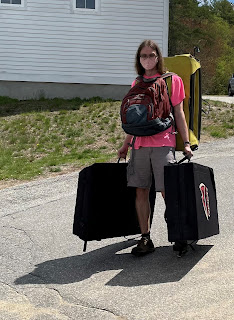5/18 11pm
Today I thought about what the point of this guide book really is. On one hand I want to make a catalogue of routes for climbers to experiment with and enjoy. On the other hand, I want to provide a platform for everyone to make routes and have them preserved for the next year's team. Today I considered the point of all of this. I want to help new climbers find what makes climbing the chapel interesting and fun. It has a lot of potential to be great fun, and a practical tool to improve as a climber, but not everyone comes to see it that way. The chapel isn’t approachable and I want to make it more so.
So I thought about how I could reach that end directly. After some encouragement from my mentor I spent part of today writing up this little story of how the chapel has evolved in my eyes over the years. I think with some revision and shortening it could be kind of an introduction to the book.
Here is the first draft. It is awful but it has to start somewhere.
Back in the fall of 2017, I was an awkward and lanky freshman. After
second guessing my chance in cross country I decided to rock climb. To
put my height and flexibility to some use in scaling walls. One cool
gray day in late September the team assembled. Instead of piling into
a bus, we were sent across campus. In confused anticipation, we walked
bewildered to the chapel and stood perplexed wondering why. Behind us
the coaches arrived with the crash pads and told us to climb up.
I did what everyone did, and what every new climber I have seen since
has done. I tentatively walked over to the easiest part of the wall,
felt around for a few holds, and started up. An uneventful 40 seconds
later I was at the top, 8 feet off the ground, and did a tentative
down climb to what felt like a nice height to drop from, dropped, and
I was done. I went over and sat down next to my shoes with the other
people who had gone. At that moment I thought I had done the chapel, I
had made it to the top, and there was nowhere higher to go.
Every Thursday the team went to the chapel. It was a matter of getting
up. First in the easiest place, then ascending other vertical
stretches around the walls. After we had gotten around it going up the
game became getting around it without coming down. Traversing sideways
for 5, 10, 15 minutes, to get past a wall, make it to the next window,
or complete the full 360, is hard and grueling, but oh so satisfying.
But endurance has its limits as does its entertainment value.
My sophomore year the game had changed. People were going up again but
not along with the glorified ladders that lent themselves so easily.
In the same holds that anyone could get up, there were games. Skipping
the best holds, not using your left hand, pausing before moving, and
of course, the classic greatest hit, finding the biggest dyno. The
change in the game was the realization that the top didn’t matter. We
were not scaling cliffs for a view and prestige, we were grunting up
10 foot walls and dropping down to at most a high five. We had to make
the fun and make the goal. The chapel demands a little more work than
a climbing gym or a cliff to be interesting to climb.
Now 4 years later I have spent so many hours upon hours staring at the
same holds. Some corners and faces I have climbed for years, but now
every day I can find something new there for me. Some unused
undercling will emerge out of a hold I have felt a hundred times and
will link up with a side pull on the hold I always avoided and there
suddenly is something new coming into the light after years of being
overshadowed. I don’t think I could ever find an end to the
interesting possibilities in these short walls which I once wrote off
as insubstantial.


Comments
Post a Comment